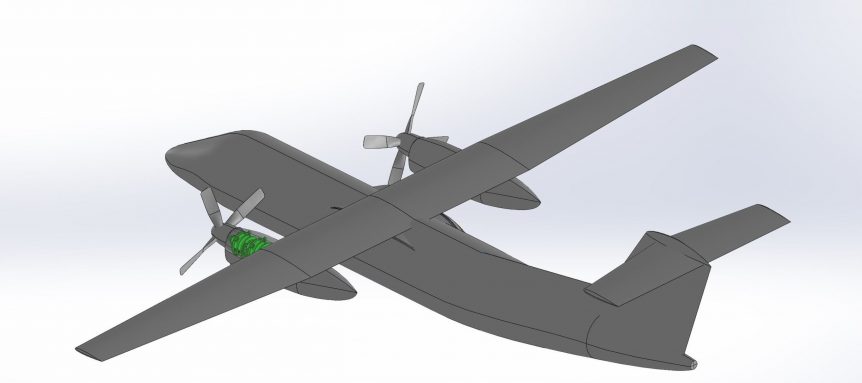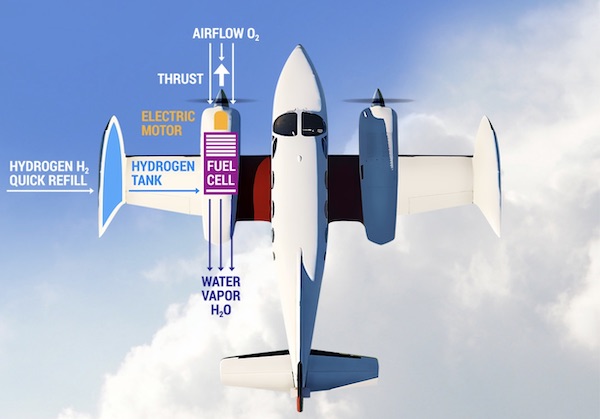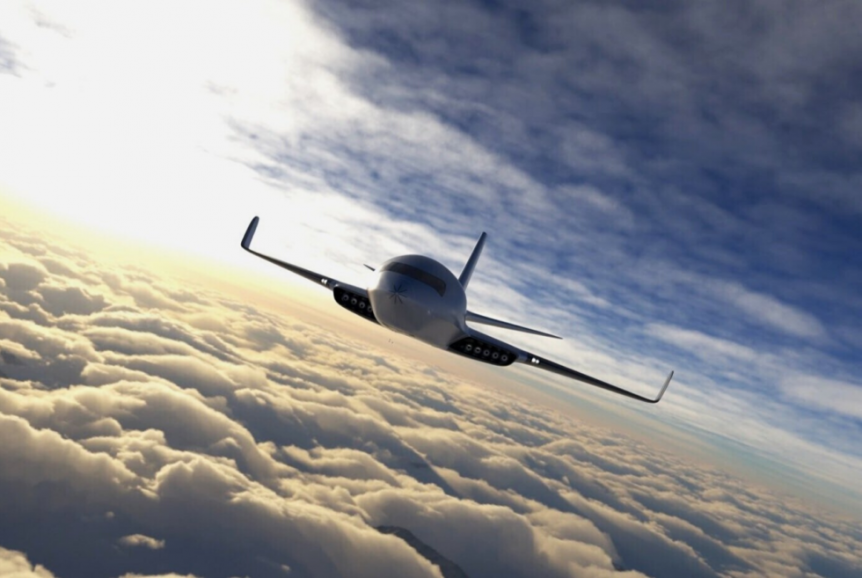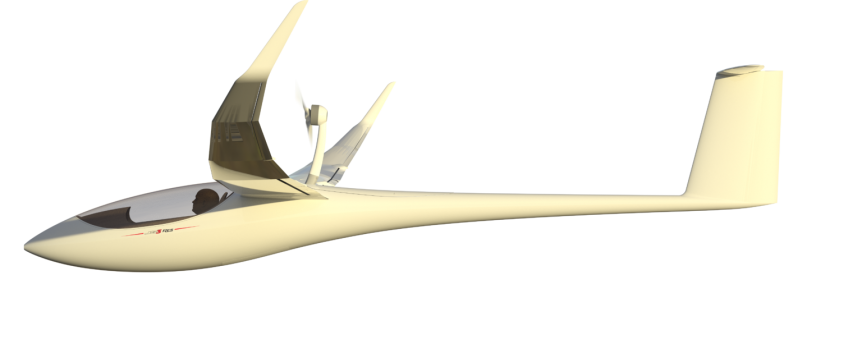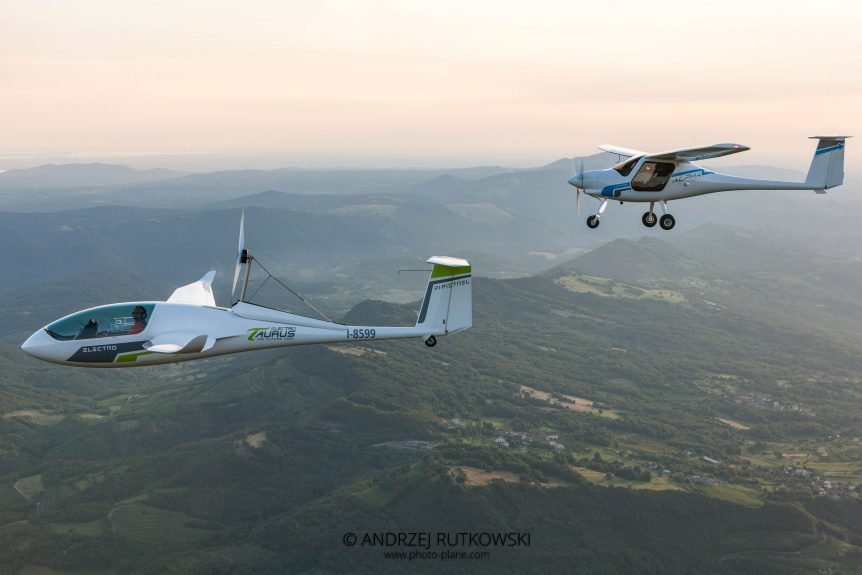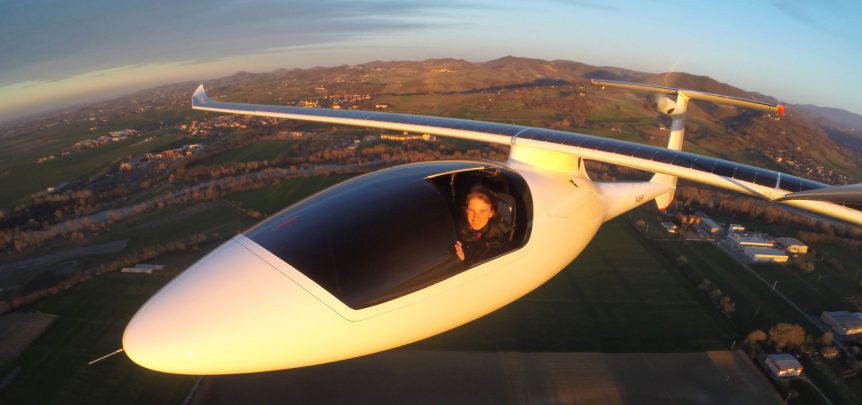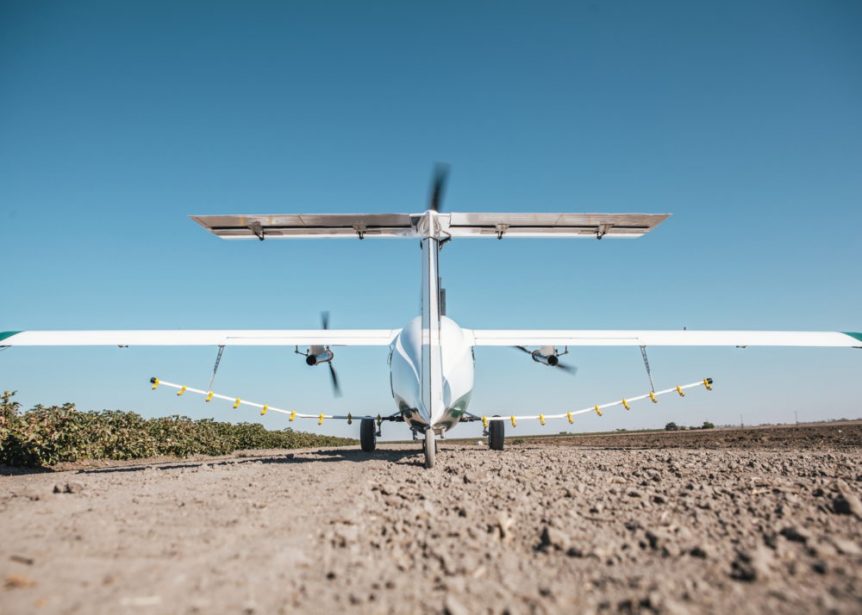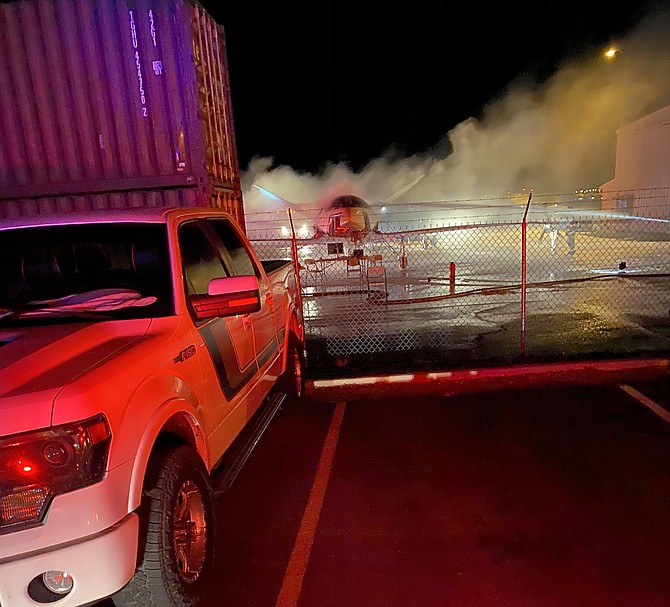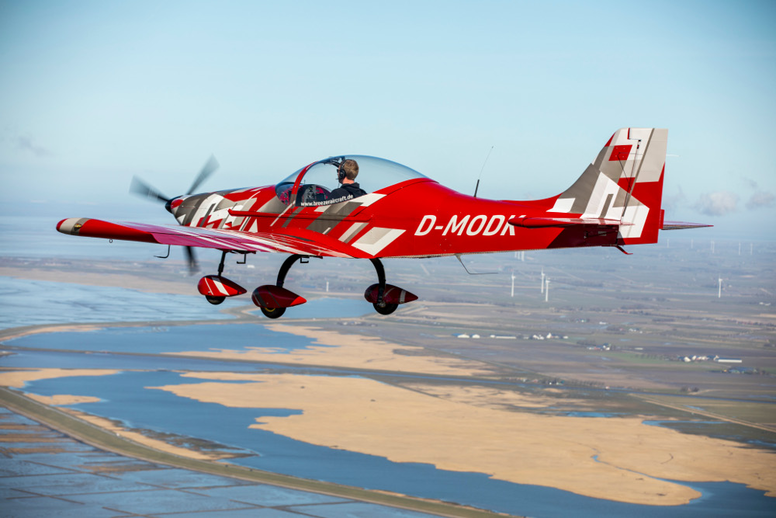Getting the Parts Free, Charged for Refills What if future flight had a simple “return the old fuel container and get a new one” business model? Paul Eremenko, founder of California startup Universal Hydrogen, wants to try it out in a Dash 8 airliner equipped with two 2-megawatt motors supplied by MagniX. Poor analogy perhaps, but in his boyhood, your editor had a camera that was sold at the store complete with a roll of film already inside. All you had to do when you took all your pictures was send it by mail, with a check or money order, and a week later, you got the reloaded camera back with the prints and negatives of your pictures. This klunky, pre-digital plan carried over from Kodak’s version 100 years before. Today, with digital photography having supplanted those earlier, more tedious processes, we save on postage and wasted photos. Let’s face it – we all like rapid rewards and instant gratification. …
ZeroAvia First Out of the Gate with Hydrogen Flight
An Historic Hydrogen Outing While Airbus and MagniX promote the near- and not-so-near virtues of hydrogen-powered flight, ZeroAvia has demonstrated such flight with the largest H2-powered aircraft so far. Their Cranfield, England-based Piper Malibu flew on H2 power for the first time September 24 on an eight-minute circuit. The blue Malibu reached 1,000 feet and a top speed of 100 knots true air speed. Quick to capitalize on the successful mission, , ZeroAvia founder and CEO Val Miftakhov held a press conference the next day. In it, he explained his team,“has had discussions with seven aircraft manufacturers about possible retrofit and new-build applications for the propulsion system. He said the company has signed letters of intent with 10 airlines that have expressed an interest in the program based on presentations made to around 30 different prospective operators.” Earlier flights in Hollister, California and Cranfield were battery powered “to evaluate different elements of the powertrain.” Unspecified modifications helped prepare the craft …
Eather One – When Friction is a Good Thing
Tribolectrics Your editor has long promoted the idea of the Grand Unified Airplane, a vehicle which would essentially power itself from sunlight, piezoelectrics, structural batteries, and even the friction of the air over its surfaces. He wrote about the concept in the May, 2013 Kitplanes, and has noted an increasing number of articles in scientific journals describing a variety of nanogenerators, including tribolectric types. Tribolectrics are not new, having been discovered in the 18th century and initially quantified by Johan Carl Wilcke, a Swedish Physicist in 1757. “Tribo” comes from the Greek for “rub,” and as shown in the following video, even the rubbing of air over a surface can generate electricity. Note that about the 1:25 point Dr. Wang blows across the nanogenerator and lights up the LEDs. Taking that idea and running with it, Warsaw-based designer Michal Bonikowski designed the Eather One to run on electricity generated during the airplane’s movement through the air. As exotic as it …
Two New Electric Sailplanes
Two electric sailplanes come from different ends of the soaring spectrum and each shows its own unique character. Their differences are as noteworthy as their geographic separation. Birdy Birdy is a single-seat, electrically powered motor glider that fits the European Union 120 kilogram class. The 264-pound empty weight puts it 10 pounds above America’s FAA Part 103 254-pound limit. But Euro craft in that category are not as limited in top or cruise speed. Birdy’s light weight required clever arrangement of components to enable a maximum takeoff weight of 280 kilograms (616 pounds) and pilots up to 1.95 meters (6’ 5”) tall. Its 13.5-meter (44.29-foot) wingspan carries only 13.9 pounds per foot, enabling 40:1 glide ratio at around 90 kilometers per hour (55.8 mph). Its 8.3 square meter (89.3 square foot) wing area lifts only 6.89 pounds per square foot, enabling a 63 km/hr (39 mph) stall speed with flaps. Birdy can top out at 180 km/hr (111.6 mph), well …
Pipistrel Velis: Part of an Electric Heritage
The Pipistrel Velis is the culmination of 13 years of electric aircraft development and the first to gain certification by the European Union Aviation Safety Agency (EASA) on June 10. Pipistrel has been in the electric airplane business since 2007 when it announced the Taurus Electro motorglider, which entered service in 2011. That aircraft went through several iterations, and is still part of the Pipistrel lineup of electric planes, which includes the Alpha Electro Trainer, the Panthera Hybrid, and the new Velis. Alpha Electro Trainer in SoCal An electric version of the Alpha Trainer, the Electro has been in production since 2015. With an empty weight of 615 pounds (279 kg) and a maximum take-off weight of 1,212 pounds (550 kg), it is a bit heavier than the Rotax-powered gas version, and carries about 100 pounds less payload. Both have similar performance, though, with rates of climb around 1,200 feet per minute. Joseph Oldham started a well-organized, well-intentioned operation to …
Eric Raymond Shares a Vision
Eric Raymond is a real pioneer in electric aviation. Decades before Solar Impulse made its epic flights Eric navigated his solar-powered Sunseeker I across the United States in 21 hops, traveling from Desert Center, California to Kitty Hawk, North Carolina. He flew over the Matterhorn on his way from Germany to Italy in Sunseeker II. He and his wife Irena build the world’s first two-seat solar-powered airplane, the Duo, which they regularly fly over Italy and Switzerland. He shared the promise and mystique of such flight with the readers of Travel Forward recently. The Future is Electric: Exploring the World in a Two Seat Solar Powered Airplane MAY 18, 2020 BY TRAVEL FORWARD While Tesla and other car manufacturers are changing the way we commute, prototype electric airplanes are set to change the way we fly in the future. Aviation has become the last frontier to become more environmentally friendly, even though technology devolved for electric vehicles can be adapted for …
Cuberg Batteries – Some Real Numbers
Cuberg, a startup battery company based in Emeryville, California, is pretty specific about its cell-level battery performance – 369 Watt-hours per kilogram at a discharge rate of C/20. This was verified in testing at the Idaho National Laboratory, with Cuberg cells demonstrating a specific power of 2,000 Watts per kilogram. Cells lasted through “around” 370 cycles with C/2 charging before they dropped to the ability to maintain 80-percent capacity. See a .pdf of the test results here. Verifiable Numbers INL tested around 20 of Cuberg’s battery cells, covering multiple cell variants across a spectrum of performance tests. “While the testing all looked good, our announcement addresses the specific metrics that are of most impact to our industry,” Cuberg CEO Richard Wang told eVTOL.com. Independent testing by certified laboratories enables us to see verifiable numbers, highly important in designing new electric aircraft and converting existing aircraft to electric power. Gasoline and Diesel fuels already have well-established numbers, which makes determining output …
Pyka: Electric, Autonomous, and Capable
“The Autonomous Airplane of the Future” Conceived in Oakland and Palo Alto, California but flying in New Zealand, Pyka’s fixed-wing electric aircraft represents a new approach in its design and application. Its makers say, “We’re building the autonomous electric airplanes of the future,” and its complement of innovative on-board electronics certainly seems to bear that out. eVTOL News reports Pyka co-founder and CEO Michael Norcia interned with Joby Aviation and moved on to spend two years as a power systems engineer with Wisk. Having experienced the difficulties with vertical lift, “…when Norcia and his co-founders — Chuma Ogunwole, Kyle Moore, and Nathan White — struck out on their own three years ago, they decided to take a more practical approach: sidestepping the technical challenges specific to VTOL (Vertical Take Off and Landing) aircraft with an STOL (Short Take Off and Landing) design, and the regulatory hurdles by seeking out unmanned applications to serve as stepping stones to future passenger-carrying operations.” …
Eviation’s Alice Involved in Fire
Time magazine lauded Eviation’s Alice last year, ranking it as one of the 100 Best Inventions of 2019. Alex Fitzpatrick compared its green goodness to the GHG-loaded nature of commercial aviation. “Flying is dirty work—the aviation industry emits nearly a quarter of total transportation-related greenhouse-gas emissions in the U.S., according to the EPA. One way to clean it up could be Eviation’s all-electric Alice, an Israeli-made nine-seater meant to convince the gas-guzzling aviation world that electric power is ready for takeoff. “The real innovation is in the lightweight materials rather than the batteries and motors and controllers and all that,” says Eviation CEO Omer Bar-Yohay. If successful, the design could pave the way for larger electric commercial aircraft. Alice, which has a range of 650 miles and should be quieter than gas-powered aircraft, begins flight testing in 2020.” The bright future for the tri-motored airplane, which shone at the Paris Air Show and a prototype of which was about to …
Hydrogen Instead of Batteries?
As battery makers worldwide strive to develop safe, high-energy-density cells, Breezer Aircraft, a German small-aircraft manufacturer, unveils plans to power one of its ultralights with a hydrogen fuel cell. Breezer’s B400-6, receiving 600kilogram certification by the DAeC (German Aero Club), is light enough to enable a small fuel-cell-motor combination to power it. Usually powered by the ubiquitous Rotax range of engine, an electric version will initially to be driven by batteries, and then powered by a hydrogen-fuel cell. eCap and Re-Fire eCap, a German company specializing in systems integration and installation for a diverse range of classic and modern vehicles, will work with Breezer on the first installations. eCap’s demonstrated ability to convert everything from an antique farm tractor and classic cars (including a DeLorean) to modern buses and delivery trucks shows their range. Employing state-of-the-art technology and techniques such as reverse engineering leads to 3D CAD models from which ECap develops prototypes. Perhaps most important, “eCap works completely independently of …

